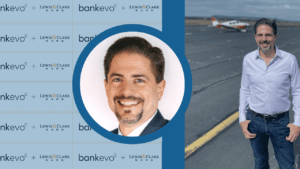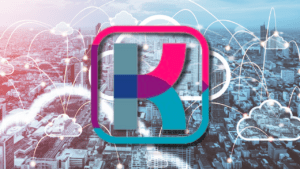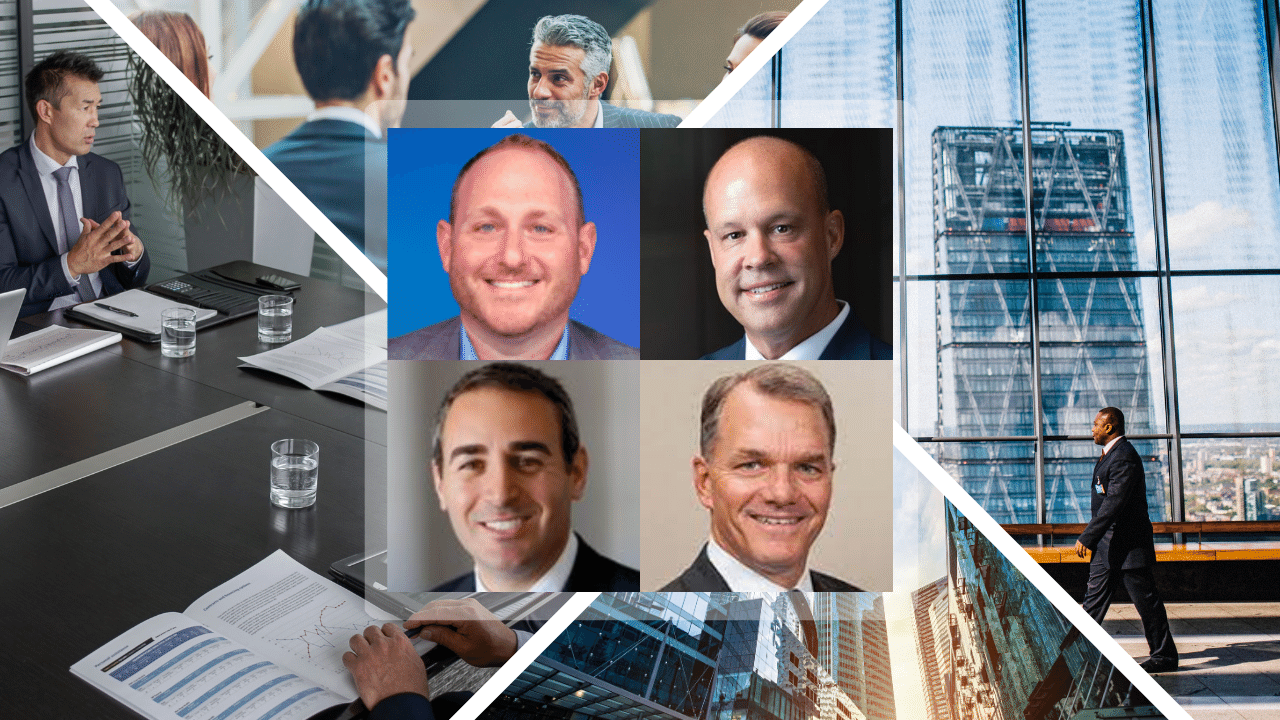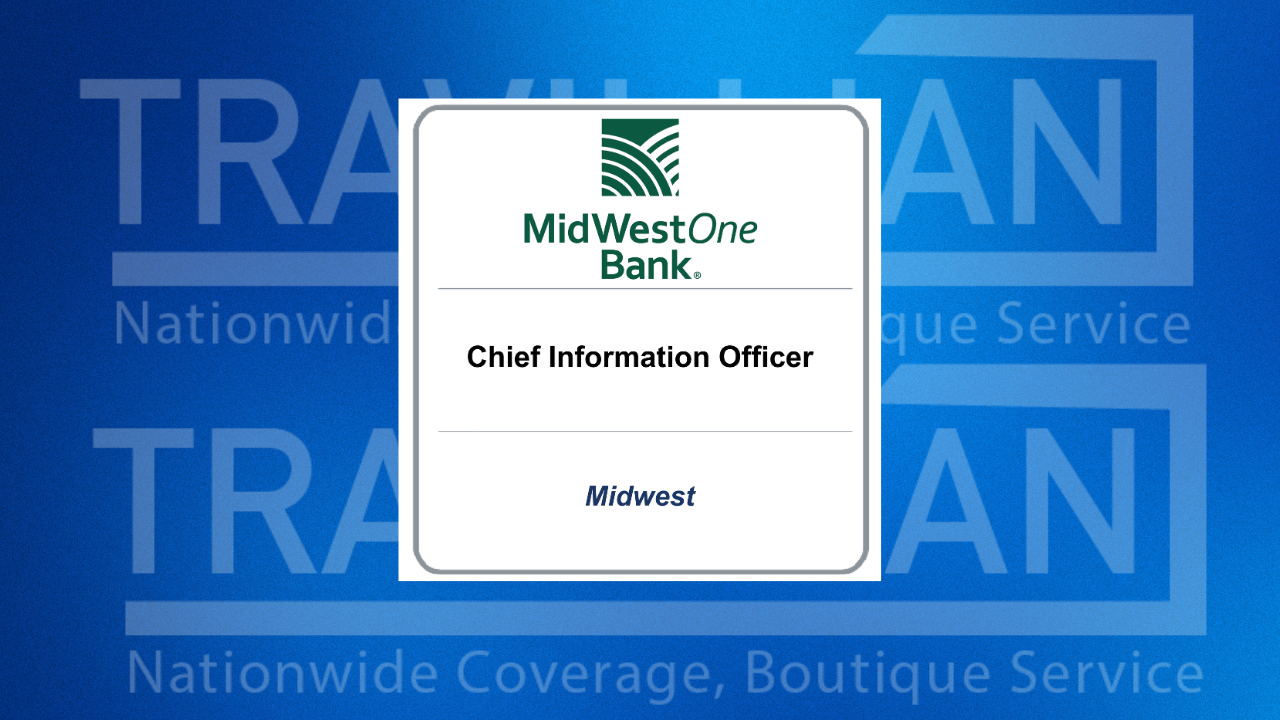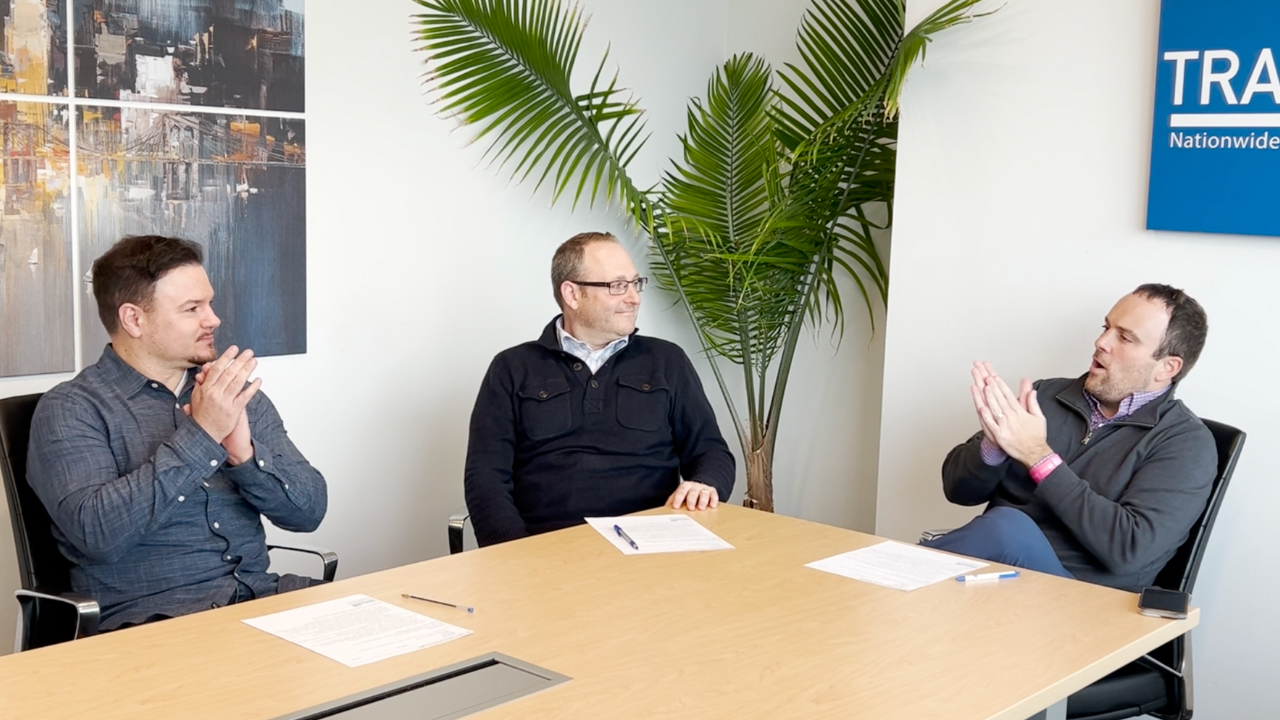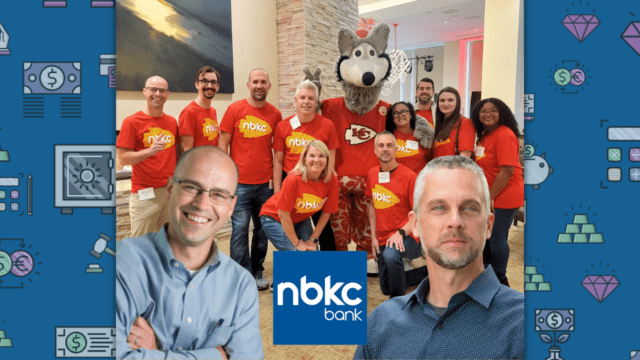Travillian is excited to welcome industry-veteran Tom Bell, CEO of Maast, to discuss the payments ecosystem in a new episode of Travillian Next. Bell’s accomplished career spans decades and includes influential roles like EVP, Corporate Strategy at First Data and CEO of Bank of America’s Merchant Services division. Bell introduces Maast and how the Synovus Bank-backed “Money-as-a-Service” initiative marks a new, innovative player in embedded finance. We also get Bell’s take on what an idea like Maast takes from a talent, skillset, and strategy perspective.
The State of Payments, According to Tom Bell, CEO of Maast
00:16 – Intro
Brian Love: Hi everyone. I’m Brian Love, Head of Banking and FinTech Recruitment at Travillian.
Travillian is a boutique, executive recruitment firm focused on financial services and my division specializes in succession planning and executive search. We are super passionate about helping financial institutions locate the unique skill sets that they need to be more sustainable and innovative. For more information, please visit www.travilliangroup.com
Today I’m joined by a very innovative guest, Mr. Tom Bell, CEO of Maast.
Tom Bell: Thank you. Glad to be here.
01:06 | What is Maast and Who is Tom Bell?
Tom Bell: Maast is a wholly owned subsidiary startup of Synovus Bank, and what it stands for is Money-as-a-Service plus. This is a broad capture of thought if you think about it, we’re Money-as-a-Service and the focus that we have is enabling software platforms to truly embed financial services into their platform.
I’ve been here at Synovus for about a year and a half. Prior to that, I was at Bank of America Merchant Services, Merchant e-Solutions, Accenture, and lots of other places. This is kind of a culmination of a lot of the different things working with the bank to create what is a very innovative, and I would say, corporate shaping, strategy shaping startup for Synovus.
02:13 | Heritage of TSYS at Synovus
Tom Bell: Synovus is over 130 years old. Starting out of Columbus, Georgia and as early as the seventies, Columbus Bank and Trust, before it was rebranded to Synovus, decided to build its own IBM mainframe card processing system.
Which seems crazy, but they did it. And they did it obviously very successfully because then they realized that other banks might want to use this platform on an outsourced basis, and they formed TSYS and the rest is history in terms of how that evolved. Synovus has been very much involved in the evolution of TSYS throughout the process, including up to the point of the acquisition by global payments. Innovation, technology, and providing solutions to the industry, are very much part of Synovus’ DNA.
3:37 | Similarities Between Embedded Finance, Embedded Fintech & BaaS
Brian Love: You mentioned embedding payments within your customer. That’s somewhat of a hot topic even at banks much, much smaller than Synovus.
What are the similarities between embedded finance, embedded fintech, and BaaS?
Tom Bell: There’s a lot of maybe even confusion about what they are. At a core, Banking-as-a-Service gets a lot of buzz and there are a number of small and large financial institutions that are working on various different Banking-as-a-Service solutions.
In my mind, Banking-as-a-Service is basically leveraging the bank, the bank’s charter, the bank’s regulatory frameworks, etc., to enable a third party, a fintech to bring financial services to market. Not unlike, frankly, in the payments space where banks are a sponsor of ISOs. It’s a very simple model with a very different flavor, but it’s a similar model.
Banking-as-a-service, especially in the small, community bank space, and regional bank space, there’s several people that are finding success in that space. But it’s really the fintech that’s bringing the solution to the ultimate market.
Then there’s the embedded fintech concept, which is almost really the inverse where a bank is rather than potentially expanding their own capabilities or they’re embedding a fintech solution into their platform. And there’s a number of things out there where they’re basically saying, I could go build this and go after this market, go after this distribution channel or I could just embed a fintech solution into my platform, into my core banking solution, and let that be a way I go to market.
We look at embedded finance as probably the next generation of all of that. Where we’re saying that embedded finance is truly taking the financial services products, and embedding them into a software platform, a Software-as-a-Service platform, etc., so that partner is selling the product of the bank. A truly integrated distribution partner.
What we like to say is different about what we’re doing at Maast, is that we’re bringing the whole product. We’re not just bringing an integration layer. We’re not bringing the bag of parts. We’re bringing the whole product and the capability for a software provider to make it part of their solution, part of their value proposition, and part of their brand.
Then, we take responsibility for the banking that’s required. The regulatory part, the compliance part, and the risk part, so that the software provider can really focus on what they do, which is building elegant software to survey business problems, typically in a vertical space, whether it’s in field services or catering or pick your industry.
They’ve created software that’s solving a business problem, and what we’re enabling them to do is to now widen the lens of how they can help their end customer. Today a software provider will be using their solution to help a company with ordering or scheduling or invoicing or all the different things operationally they have to do to make their business run.
We’re saying basically, let’s just extend that. Let’s just extend that to include financial services that your software provider gets to bring to market. Another way to think about it is almost analogous to what’s happening with embedded payments. A lot of times when people talk about embedded finance, they’re really talking about embedded payments and embedded payments in software platforms is becoming table six.
If you have a piece of software that you’re trying to convince a small business to use, and they can’t accept payments through that platform, you’re probably not going to acquire that many customers. We’re basically saying, take that exact concept, and then it’s just extended horizontally to include checking, lending, payroll, accounting, insurance, and all the different things that we have in our product roadmap. That software provider and I’m somewhat reluctant to use this term, but I think it is appropriate, kind of becomes the super app for that small business. No longer are they having to use that platform to operationally learn their business and then go to some completely different platform to solve their financial services needs. It’s truly integrated together.
The other thing that we’ve done as part of our build is that we’ve also integrated the underwriting. Which, in my world when you say underwriting, usually that means friction. And what we’re saying basically is when you get underwritten for the payments account, you’re immediately underwritten for the checking account, and you’re immediately underwritten for the loan.
We’ll use that same underwriting information as we go along and expand the product set. An ISV, a software platform, can have the confidence that once they partner with Maast, adding a new product, and then selling that product to their customers is going to be pretty easy. Or we like to say, it’s one relationship, one contract, one integration.
For the ISV, it’s very compelling, and for a software platform, it’s very compelling because it gives them a whole new product set where they can gain revenue. With payments, software providers are accustomed to participating in the revenue.
There’s some revenue-sharing model that’s in place. But we’re saying that the same model’s going to exist on deposits, that same model’s going to exist on loans, and so they will be able to potentially increase revenue per customer on their platform two to five times what they’re able to do with their current product set. Especially these days, with potentially a downturn in the economy and other headwinds that we’re facing, that’s a really compelling message for a software provider if they can start to generate more revenue per customer while they’re in this downturn in the economy.
10:52 | Why Does Embedded Finance Work for a Bank like Synovus?
Brian Love: Embedded finance is not a niche strategy that every bank can do. Most banks probably have to fall back on embedded fintech, but why does it work for a bank like Synovus?
Tom Bell: We approached this very much as a startup organization. We’ve formed this wholly-owned subsidiary within the bank. Many of the people that I’ve brought in on the management team are not bankers, including myself, I’m not a banker. But what we’ve also done is that we’ve leveraged platform providers and new technology outside of the bank.
We’re not standing this up on the core Synovus bank platform. We’ve stood up our own digital bank that will be the system of record for this solution. We’ve leveraged heavily on partners. Basically, we’ve said we’re going to work very closely with partners to get this stood up very fast because basically, it’ll be from the point that we started really earnest on this to where we are today and we are live with some pilot customers. It’s been 18 months.
We’ve been able to really minimize the expenditure and kind of treat the precious funding that we’ve gotten from the bank to be able to really get to market fast because that’s been our objective. We want to be able to get it in market, test, learn, evolve, and iterate through this process. Because as you said at the very beginning of the discussion, it’s evolving, and what is embedded finance and what is valuable and what is not, and what are customers going to really clamor for versus what’s not going to be important?
We wanted to get that in market and test it as opposed to a three-year build that takes millions and millions of dollars. We’ve leveraged a lot of people from our partners, and a ton of people from the bank. One of my favorite things I always like to say is that I don’t like strategies that start with first hiring a hundred people.
I like strategies with, okay, let’s get a scrappy group and let’s just figure out how we make it work, and then we’ll harden it and we’ll build it. We’ll do what we need to do to scale it. Once we’ve proven that it’s going to work.
13:57 | Hiring Recommendations for Banks Trying to Innovate
Brian Love: Some of the community banks fall into that trap of let’s hire, hire, hire, instead of thinking let’s get the idea and hire around that idea. Let’s bring the person in who’s going to bring the idea, rather than us creating the idea.
You started with kind of a ragtag team and non-bankers. We are seeing a trend of fintech folks coming into the bank space and innovating. What’s important to you if you were a bank trying to be out there and innovate as you’ve been at Maast? What would you recommend in terms of hiring?
Tom Bell: I think first, it’s individuals that have experience in creating something new and that have gotten their nose blooded maybe in creating something new. Failed a few times and then learned from that experience.
In all industries and all organizations, there are people that have started at the bottom and worked their way up through the top, but it’s been within a structure, a proven structure that enables them to be successful. I think when you’re doing this type of stuff, you got to find people that are successful without that structure because the structure doesn’t exist.
That’s what I’ve really focused on, are people that can operate very successfully in that type of unstructured world and are willing to take some risk and willing to stick their neck out a bit. It’s not like it’s super risky from a career standpoint, but it is different than in a corporate job with all the structure and things wrapped around you.
That’s number one. I think number two, is different disciplines. The people that we’re bringing in are truly experts in their space. Whether it’s going to be the product, whether it’s going to be risk and compliance, whether it’s going to be operations, and really find a person to put it in the top of that pillar in the beginning to then really drive what’s underneath it.
That’s what we’ve done. We basically have me, a CMO, a Chief Risk Officer, a Head of Product, and the COO, and I hired them in to then let them build the team.
We didn’t spend a lot of time trying to define the final iteration. We said, let’s get the pillars set, and then together we’ll figure out what levels 2, 3, 4, 5, and 6 really need to look like once we evolve this business model.
I think that’s where sometimes people and companies believe that they’ve got to have it engineered, designed, top to bottom, left to right before you start. Trust me, we did the opposite. We started with the concept and then just started building and adding on and building and adding on.
There’s been clearly things that we’ve done that in retrospect, were bad ideas. And then there’s been other things that have just been like bluebirds that flew in the window and we’re just like, holy smokes, that’s genius. That’s the nature of it.
17:24 | Benefits of pride, Empowerment, and Employees Who Feel Connected to Their Work
Brian Love: In my experience and with well-run companies, empowerment breeds pride in what you do and you get the best performance from people that really feel connected to their work. Is that the case too?
Tom Bell: Absolutely. I think it goes beyond that as well. Synovus and the leadership at Synovus all the way to the top, with Kevin Blair, they have empowered us to go do this, and they’ve rallied the bank behind us to go do this. I wake up every day and say thank you for my lucky stars because it’s never no. It’s how do we help, how much, how fast, and we’re really empowered and then we’ve got the bank behind us to really help push.
From the point we started discussing this strategy to today, not once have I had the, well, that’s not the way we do it here. It’s been okay, I understand what you’re trying to accomplish, so let’s figure it out.
18:55 | Predications for 2022 and Beyond
Tom Bell: I do think that you’re going to see more and more financial institutions dipping their toe in this space, whether it’s banking-as-a-service, embedded fintech, embedded finance, or the next iteration, whatever it is in the future.
I think they realize, especially at the community and the regional bank level, it’s hard to grow because how do traditional banks grow? Well, they decide to move into a new market, which means you have to hire more people, you have to open facilities, and you have to build relationships. That’s tried and true, but it’s hard. Takes time. It’s expensive.
Or you can acquire a bank, right, which is hard, has a lot of execution risks, and requires capital. That’s why I think Synovus is uniquely positioned and I think other regional banks are looking at this as using a distribution partner model to distribute product.
In our case, it’s software platforms to distribute Synovus product ultimately. If you go all the way to the bottom of the stack, it’s Synovus product that’s being distributed, it’s Synovus balance sheet that is being leveraged. It has a real appeal to it in terms of an efficient growth model.
Number one, I think you’re going to see more banks, financial institutions working on this.
21:36 | Vertically Integrated Solutions
Brian Love: There are about a hundred banks in the BaaS space right now. I think by next Christmas, I’d be surprised if it’s not doubled.
Tom Bell: Yeah, and I think it’s interesting when you correlate that with what’s happening in terms of vertically integrated software.
When we started this journey in terms of the initial conversation strategy, you know working with BCG, about 30% of small businesses were using some vertically integrated solution to run their business, whether they’re in construction, field services, whatever it was.
That number, two years later, it’s now 50%. The correlation of software really being the distribution model and more and more banks wanting to go there, I think is why you’re going to see an interesting transition here. I think more and more are going to realize that it’s more than just payments and there’s an opportunity to distribute true financial services.
I do think that, as always, the B2C model is going to continue to inform the B2B model. That’s the reason why, in my opinion, why you see a lot of B2B digital banks being formed because that’s the way the customer wants to interact with their financial institution.
A lot of that is being informed because that’s the way that as an individual, you’re interacting in a very digital way with your financial institution and then you put your business owner hat on, and you want to have the same experience. I think you’re going to see the inevitable demand for that to happen, and I made the reference earlier about the super app, but I think small businesses want to simplify their life.
They don’t want to complicate their life. And so, if I can acquire the products and services that I need to run my business in a very low friction, easy-to-buy, easy-to-use manner. Why wouldn’t I do that? I think that’s going to continue to happen there. As I said earlier, vertical software, there’s a long tail to that I think in terms of more and more vertical solutions. The funny thing is, is that even as we’re talking to potential partners, as we’ve sized the market, the addressable market, service market, all those kinds of things, it’s the goalpost is moving because you don’t know about that guy that’s in the garage right now, that is an HVAC contractor, who figured out that he can build better software to help run his business and then take it to market.
We see a ton of that. We’re having conversations with a ton of people that have built software to run their business, and now they’re flipping the script and they’re going to take product to market.
We don’t even see that in terms of what the real addressable market is. Those are the things that we’re seeing, we’re banking on, frankly, because we believe that’s why now is the right time for Synovus to launch something like Maast because of all those different forcing functions coming together.
It is one of the top strategic initiatives at Synovus, as you might expect. We have some very lofty goals over the next five years in terms of what this is going to mean in terms of revenue, deposits, loan balances, etc.
25:11 | What to Expect from Maast Over the Next Few Quarters
Tom Bell: We’re going to go into what we call a controlled launch in the first quarter. We’ll be continuing to be very selective in terms of software partners that we bring onto the platform.
Our objective would be by the second half of the year truly turn it on and what I mean by truly turn it on is that a software provider somewhere in the 50 United States will be able to go to maast.com and hit that button that says apply and that’s what we call our generally available release.
Our goal is to have that truly, generally available by the midpoint of the year 2023 but obviously, we’re boarding our highlighter target partners all the way through that period. From there, it’s all about scale. We certainly have high aspirations of how quickly this is going to scale so we’re busily building the infrastructure underneath it so we can support it.
Travillian’s Banking and FinTech Practice provides Search and Talent Advisory services to depository institutions across the country. Established in 1998, the firm has built a unique platform that touches every corner of the industry. To learn more, click here, or get in touch below!
|
Brian Love, Head of Banking & Fintech
(484) 680-6950 | blove@travilliangroup.com |

